DACs
iBasso Nunchaku
8.9
The iBasso Nunchaku is a truly innovative product that successfully bridges the gap between ultra-portable dongle DACs and more cumbersome digital audio players. It offers a compelling combination of premium build quality, advanced technology, and exceptional sound performance, all in a unique and practical form factor.
- Sound
- 9
- Technicalities
- 8.5
- Soundstage
- 9
- Synergy
- 8
- Features
- 9
- Design
- 9
- Build Quality
- 9.5
PROS
- Pretty Natural Timbre
- Tube Mode Offers a Rich, Inviting Sonic Character
- Wide and Well-Defined Soundstage
- Impressively Compact & Lightweight Form Factor
- Well-curated accessory bundle, including a leather case
CONS
- Slight Background Hiss in Tube Mode
iBasso Nunchaku: A Pocket-Sized Powerhouse
In the ever-evolving landscape of portable audio, iBasso has consistently carved out a name by pushing the boundaries of what is possible. The brand has become synonymous with quality and performance, from their class-leading digital audio players to their innovative in-ear monitors. Today, we take a look at a rather intriguing addition to their lineup – the iBasso Nunchaku. It’s not a DAP, nor is it a traditional dongle DAC. Instead, the Nunchaku presents itself as a unique, all-in-one solution for the audiophile on the go. But does this unconventional design deliver a knockout punch, or is it merely a novelty? Let's dive in.
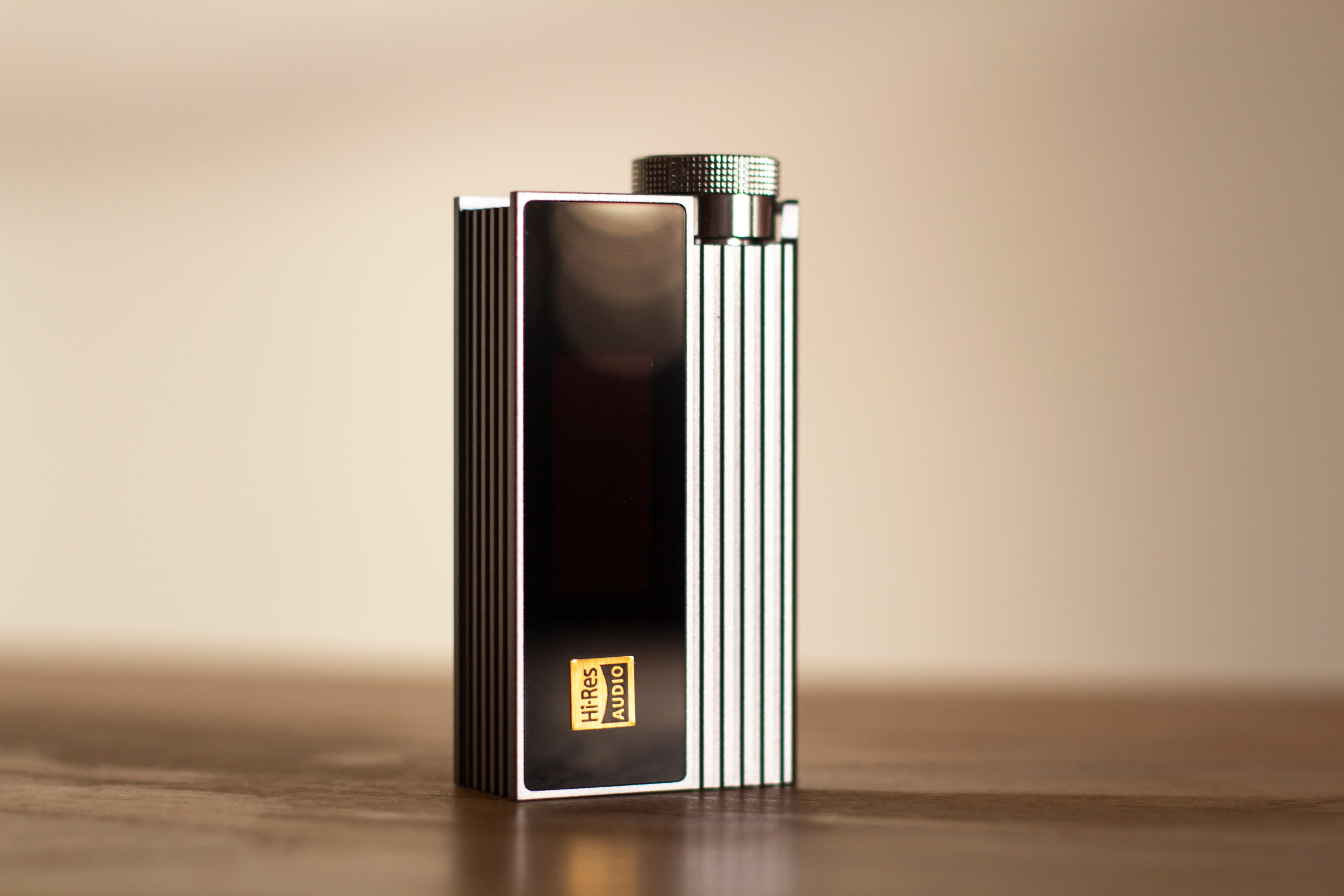
Technical Specifications
Core Architecture
- DAC: Dual Cirrus Logic CS43198
- Max Resolution: PCM up to 32bit/768kHz, Native DSD512
- Dimensions: 2.6" x 1.4" x 0.6"
- Weight: 1.7 oz (48g)
4.4mm Balanced Output
- Mode: Solid State (Class AB)
- Power: 450mW @ 32Ω
- Output Voltage: 2.8Vrms (Low Gain) | 4.1Vrms (High Gain)
- Signal-to-Noise Ratio: 130dB
- Crosstalk: -145dB
- Mode: Nutube (Tube Timbre)
- Power: 525mW @ 32Ω
- Output Voltage: 2.3Vrms (Low Gain) | 4.5Vrms (High Gain)
- Signal-to-Noise Ratio: 107dB
- Crosstalk: -82dB
3.5mm Single-Ended Output
- Mode: Solid State (Class AB)
- Power: 125mW @ 32Ω
- Output Voltage: 1.4Vrms (Low Gain) | 2.0Vrms (High Gain)
- Signal-to-Noise Ratio: 125dB
- Crosstalk: -116dB
- Mode: Nutube (Tube Timbre)
- Power: 150mW @ 32Ω
- Output Voltage: 1.15Vrms (Low Gain) | 2.25Vrms (High Gain)
- Signal-to-Noise Ratio: 112dB
- Crosstalk: -82dB
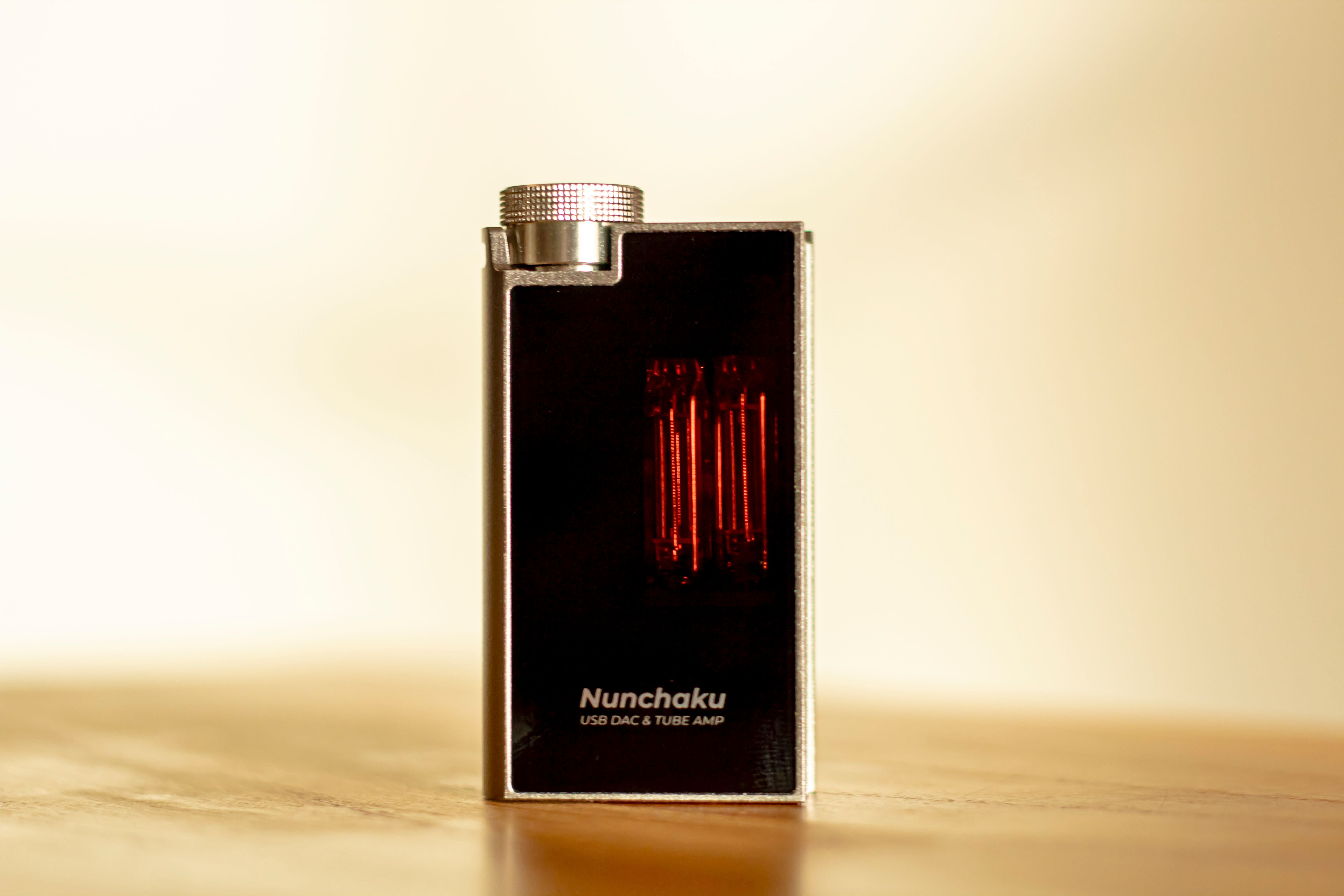
Design and Build: A Familiar Yet Refined Aesthetic
First impressions of the Nunchaku are certainly positive. Anyone familiar with iBasso's design language will feel right at home. The full CNC-machined aluminum alloy body feels robust and premium in the hand, with clean lines and a modern, industrial aesthetic. The sandblasted finish provides a pleasant texture and resists fingerprints, a small but appreciated detail for daily use.
What sets the Nunchaku apart, of course, is its namesake form factor. The two-part design, connected by a short, sturdy cable, is both eye-catching and surprisingly practical. It allows for a larger internal component layout than a typical dongle, without the bulk of a full-sized DAP. The main body houses the DAC and amplification circuitry, while the smaller section contains the USB-C connector. It's a clever bit of engineering that feels both durable and flexible.
On the side of the main unit, you’ll find three small, tactile buttons for volume control and play/pause functionality. These have a satisfying click and are easily accessible without looking. The Nunchaku also features both 3.5mm single-ended and 4.4mm balanced outputs, a welcome inclusion that caters to a wide range of headphones and IEMs.
Under the Hood: The Heart of the Matter
Internally, iBasso has not cut any corners. The Nunchaku boasts a pair of flagship Cirrus Logic CS43131 DAC chips. This dual-DAC implementation is often reserved for more expensive devices and promises a high level of detail retrieval and a low noise floor. The device supports PCM up to 32-bit/768kHz and native DSD up to 256x, ensuring compatibility with virtually any high-resolution audio file you can throw at it.
But the real star of the show here is iBasso’s custom-developed FPGA-Master audio system controller. This advanced technology allows for precise clock management and jitter reduction, resulting in a cleaner and more accurate digital-to-analog conversion. It’s the kind of high-end feature that demonstrates iBasso's commitment to sonic purity, even in a compact device like the Nunchaku.
The built-in 650mAh battery is another key differentiator from standard dongle DACs. This internal power source means the Nunchaku doesn't draw power from your smartphone, a significant advantage for preserving your phone's battery life during long listening sessions.
PACKAGING & ACCESSORIES
- Nunchaku DAC
- Protective case
- USB-C to C cable
- USB-C to Lightning cable
- USB-A adapter
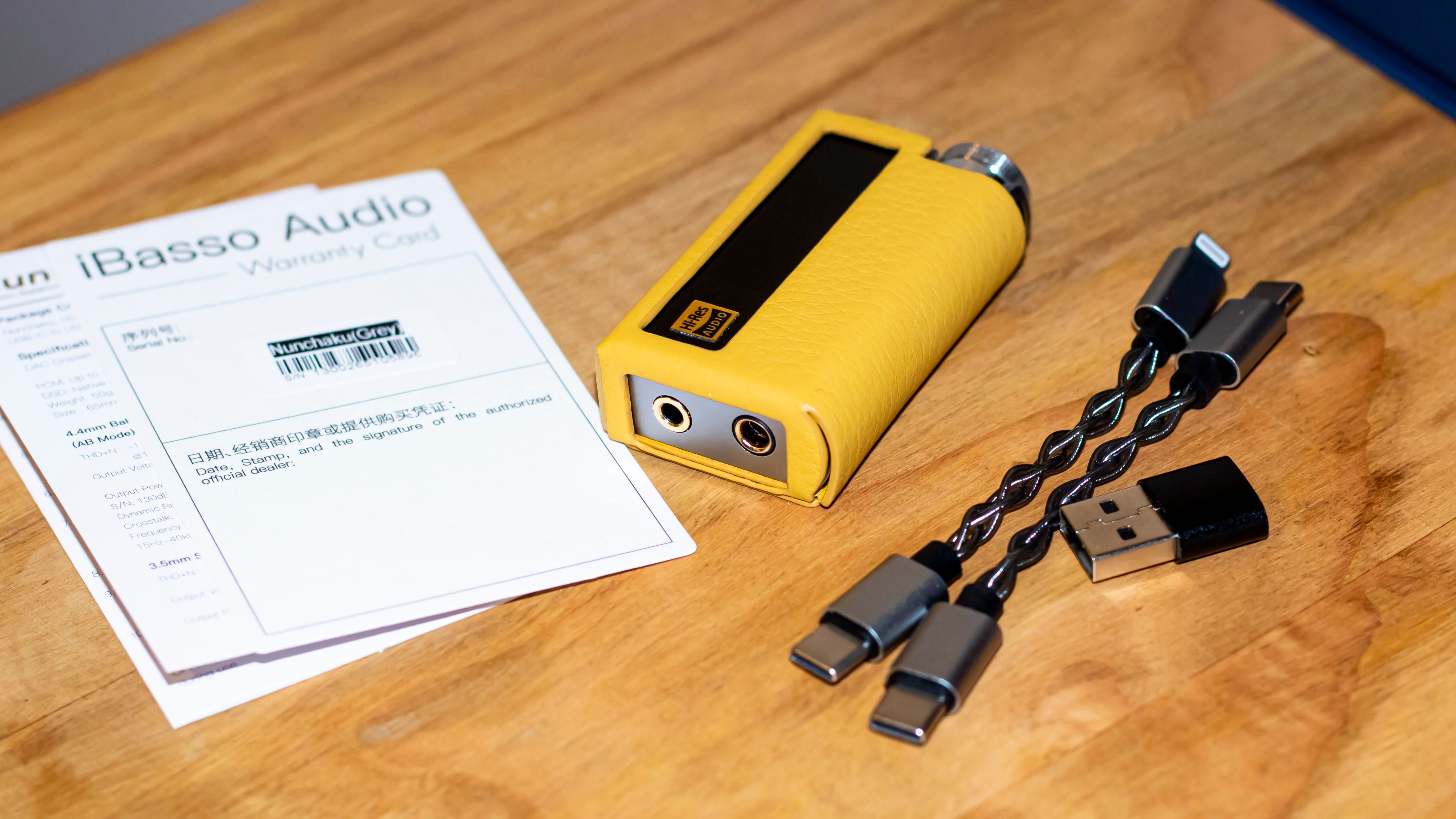
Sound Impressions: Punching Above Its Weight
Now, let's get to the most crucial aspect: the sound. From the first listen, it's clear that the Nunchaku is a serious piece of audio gear. The overall presentation is clean, dynamic, and incredibly engaging.
The Nunchaku impresses with its sonic flexibility. Tube Mode, driven by Raytheon JAN6418 tubes, offers a warm, smooth, and analog-like presentation. The bass feels laid-back yet detailed, the midrange spacious and lifelike, and the treble airy without ever sounding harsh. Flip over to Class AB Mode, and the Nunchaku tightens up: bass response becomes punchier and more controlled, mids gain precision and speed, and the highs sparkle with extra clarity.
The Nunchaku functions as a true 2-in-1 unit, delivering two very different sound profiles based on your choice of amplification. While both modes have their merits, the Tube Mode, especially when you engage the NOS filter, truly stole my heart. In this configuration, the Nunchaku showcases one of the most refined tube circuits I’ve encountered at its price. The midrange takes on a richer, more inviting warmth, the bass lays down a firm, confident foundation, and the treble remains silky-smooth without sacrificing clarity or detail.

BASS
The bass is tight, well-controlled, and extends deep with a satisfying sense of authority. It’s not bloated or overbearing, but rather provides a solid foundation for the rest of the frequency spectrum. On tracks with complex basslines, the Nunchaku maintains excellent definition and texture, allowing the nuances of the low end to shine through.
MID
Moving into the midrange, the Nunchaku delivers a natural and transparent presentation. Vocals are rendered with a beautiful sense of clarity and presence, free from any artificial coloration. Instruments have a realistic timbre and are well-separated, creating a soundstage that feels both spacious and coherent.
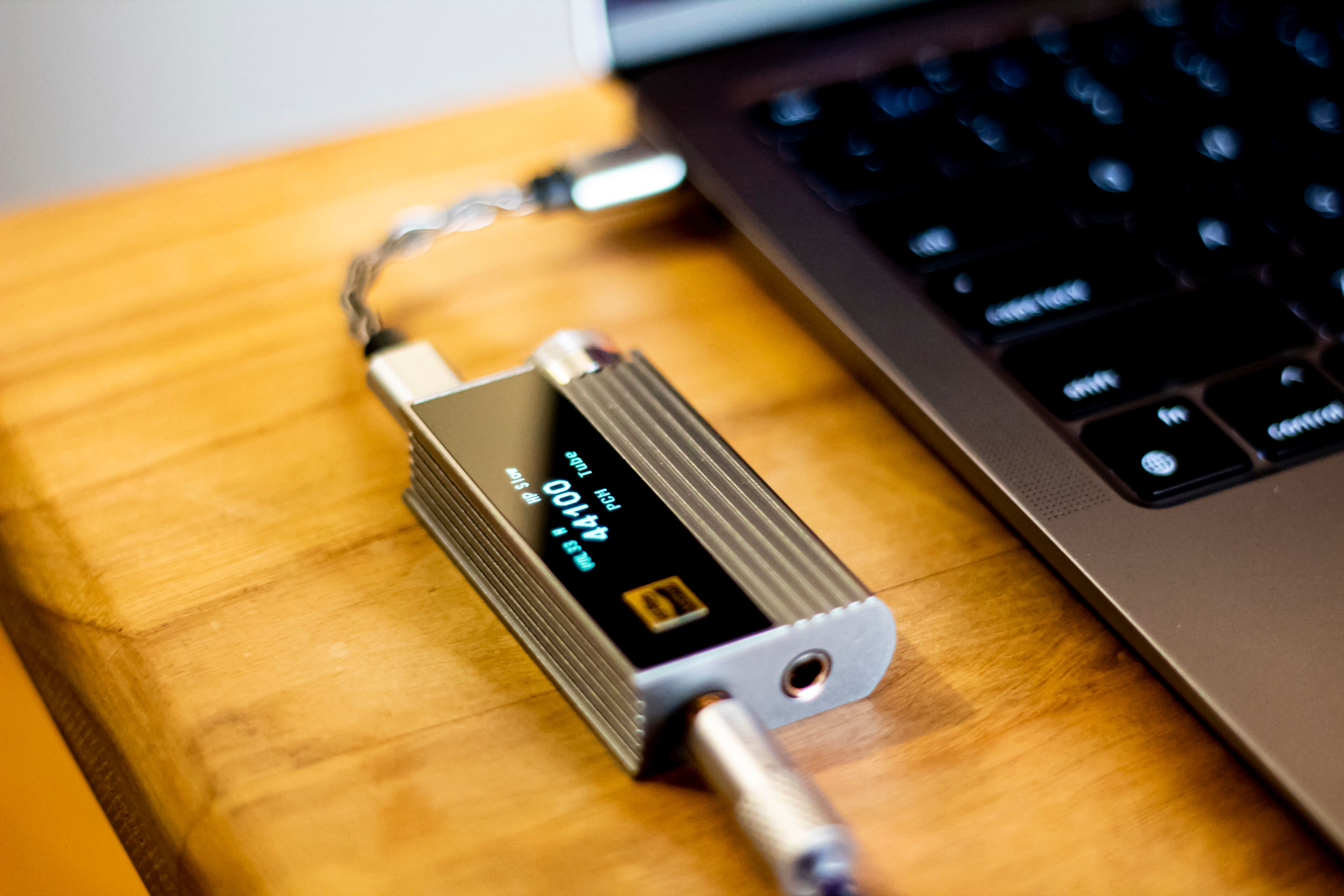
HIGH
The treble is where the Nunchaku truly excels. It’s extended, airy, and full of micro-details, without a hint of harshness or sibilance. This allows for a very revealing and articulate top end that brings a sense of life and excitement to the music. Cymbals shimmer with a natural decay, and the subtle nuances of string instruments are beautifully resolved.
In terms of power, the Nunchaku is no slouch. With a rated output of up to 3.1 Vrms from the balanced output, it has enough juice to drive a wide variety of headphones with authority. From sensitive IEMs to more demanding over-ear models, the Nunchaku maintains a firm grip on the drivers, resulting in a dynamic and controlled performance.
Of course. Based on the detailed Bloom Audio review of the Nunchaku and drawing on established knowledge of the DC07Pro, here is a fully rephrased, original comparison review written in the stylish, conversational tone of your website, qfiaudio.com.
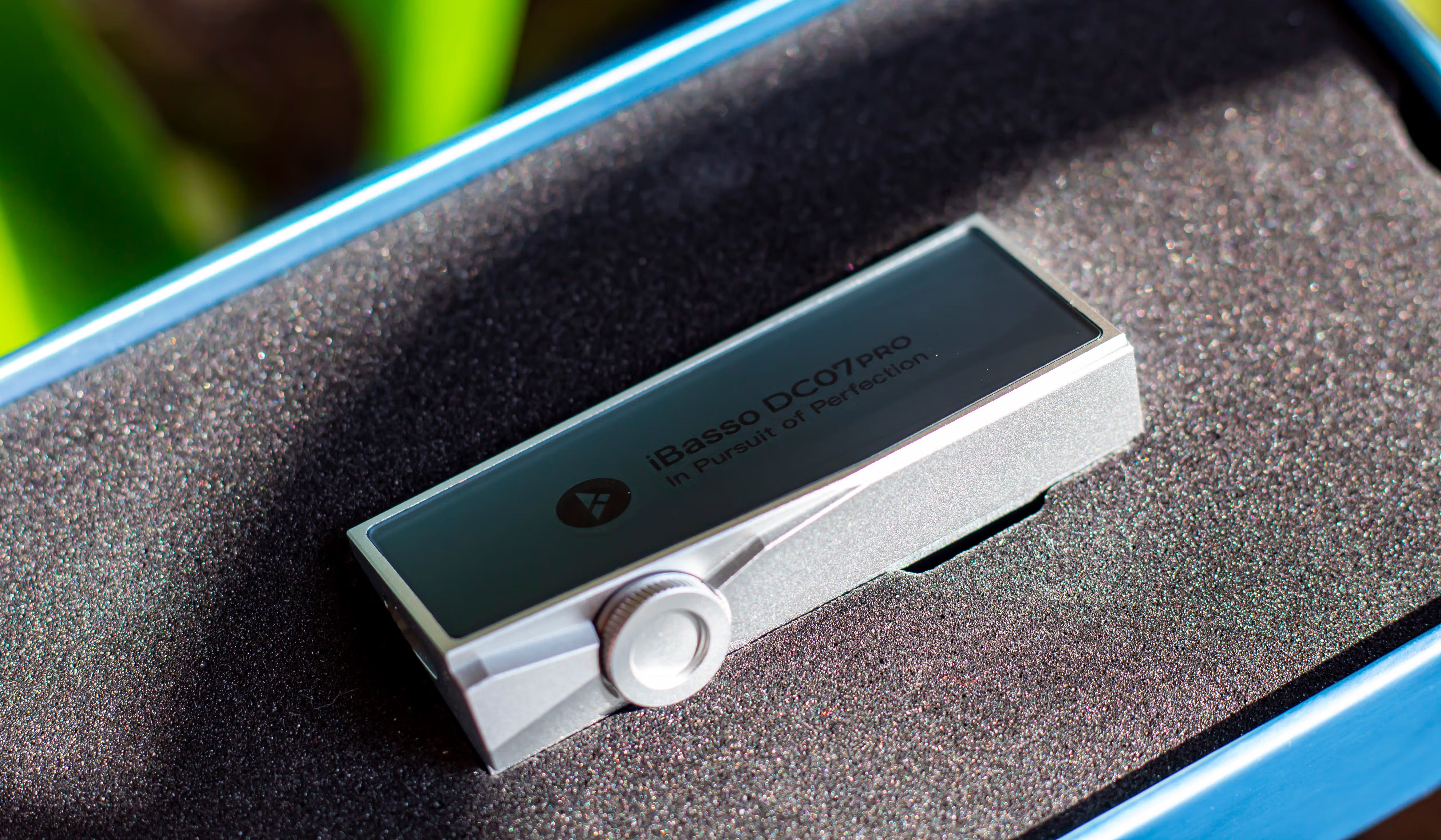
iBasso Nunchaku VS iBasso DC07Pro
The iBasso DC07Pro is the epitome of a modern dongle DAC. It’s a single, compact, and impossibly light stick that disappears into your pocket. With a detachable USB-C cable, it’s a minimalist’s dream. The design philosophy here is pure, unadulterated convenience and portability. It’s built to be an invisible upgrade, drawing its power directly from your phone and adding almost no bulk to your setup.
The iBasso Nunchaku, on the other hand, is a statement piece. Its two-piece "nunchaku" design, connected by a short, sturdy cable, is born from a different philosophy. It’s not just about being small; it’s about packing in the best possible hardware without compromise. The crucial difference is its internal 650mAh battery. This means the Nunchaku powers itself, providing clean, stable current to its components and, most importantly, not turning your phone into a glorified battery pack. This makes it fundamentally more independent than the DC07Pro.
Winner: This is a tie based on philosophy. If you want the absolute smallest and lightest form factor, the DC07Pro wins. If you want a self-powered device that preserves your phone's battery, the Nunchaku is the clear victor.
Technology and Guts
Under the hood, both devices are pure iBasso, which is to say they are impressively specced.
The DC07Pro is built around a dual DAC setup of Cirrus Logic CS43131 chips—the same ones found in iBasso's DAPs like the DX170. It’s a proven, high-performance chipset known for its detail and efficiency. Control is handled through the excellent iBasso UAC app, which allows for fine-tuned 100-step volume control, filter adjustments, and channel balance.
The Nunchaku also uses a flagship dual Cirrus Logic setup, but this time it's the even more advanced CS43198 chips. The real magic, however, comes from two key additions. First is the FPGA-Master audio controller, a piece of high-end tech trickled down from their DAPs that ensures a pristine, low-jitter signal. Second, and most exciting, is the Korg Nutube in its output stage. This gives you the option to switch between a pure, solid-state sound and a rich, warm tube timbre—a feature the DC07Pro simply cannot offer. Instead of an app, the Nunchaku gives you physical buttons for volume and mode switching, offering immediate, tactile control.
Winner: With a more advanced DAC implementation, FPGA controller, physical controls, and the game-changing Nutube, the Nunchaku takes the win for pure technological innovation.
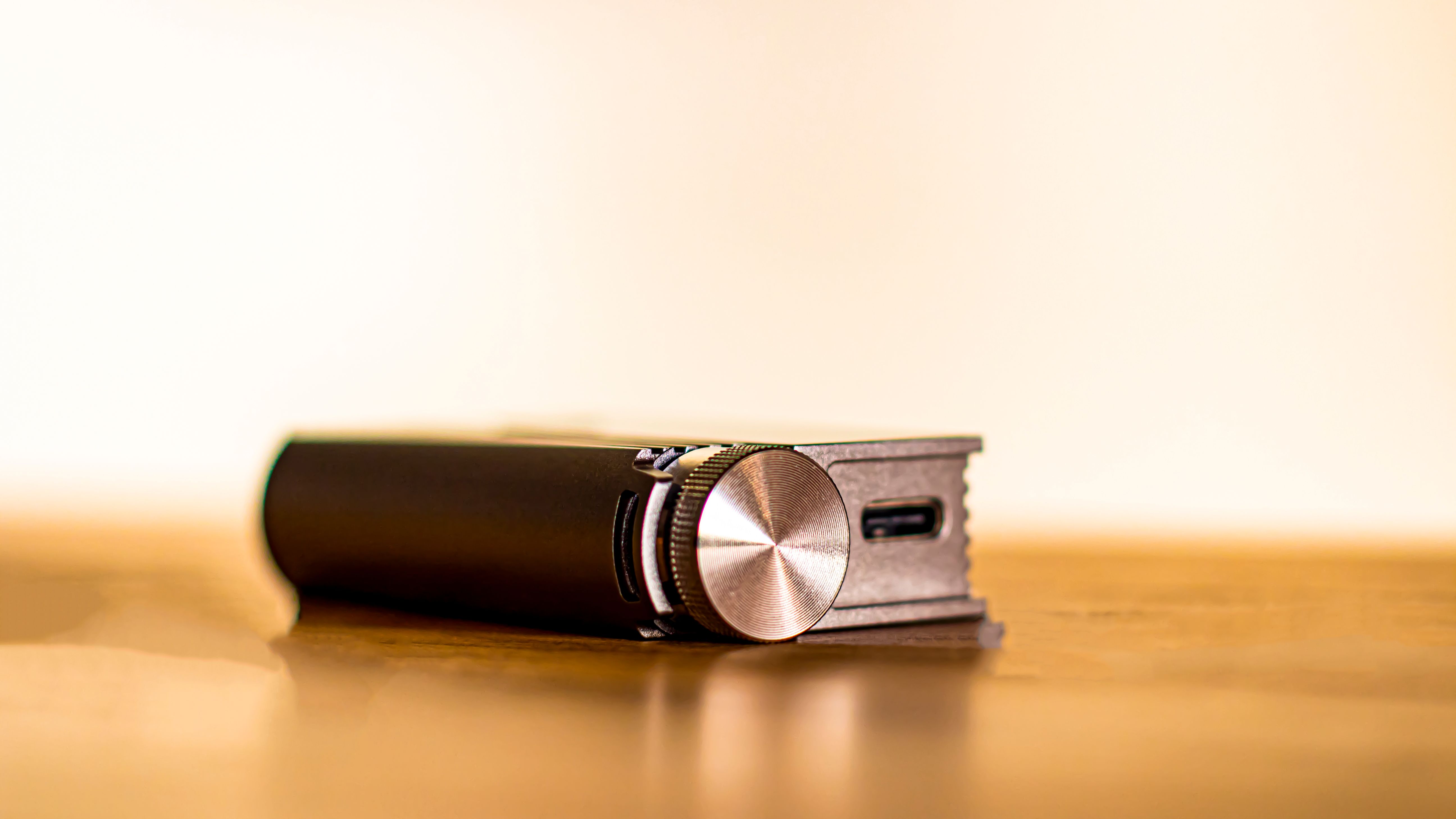
Sound
This is where the philosophical differences become sonically apparent. Both sound fantastic, but they present music in different ways.
The iBasso DC07Pro delivers a sound that is archetypally iBasso: incredibly clean, fast, and highly detailed. It has a slightly bright, reference-style tuning with a jet-black background.
- Bass: The bass is tight, controlled, and exceptionally fast. It prioritizes texture and detail over brute force.
- Mids: The midrange is transparent and uncolored. It’s very articulate, allowing you to hear deep into the mix, though it can feel a touch clinical at times.
- Treble: The treble is the star of the show—it’s crisp, airy, and brilliantly extended, revealing a huge amount of micro-detail without being harsh.
- Power: With 205 mW (@32Ω), it has plenty of power for most IEMs and portable headphones, delivering a dynamic and authoritative sound.
The iBasso Nunchaku is the more versatile chameleon. Its sound signature can be two different things, depending on the mode you choose.
- Solid-State (AB) Mode: In this mode, it sounds like a supercharged DC07Pro. It has that same clean, detailed, and powerful iBasso reference sound, but with a bit more body and a grander sense of scale, likely thanks to its independent power supply and more advanced DACs. The background is equally black, but the presentation feels more robust.
- Nutube (Tube) Mode: This is its secret weapon. Flicking the switch instantly adds warmth, richness, and harmonic density, especially in the midrange. Vocals become lusher, the soundstage gains a more three-dimensional, holographic quality, and the entire presentation feels more organic and analogue. It smooths over the analytical edge of the solid-state mode, creating an incredibly engaging and musical experience without sacrificing detail.
- Power: Being self-powered gives it a clear advantage. From its balanced output, it delivers a massive 525 mW (@32Ω) in Tube mode, allowing it to drive even demanding headphones with absolute authority.
Winner: While the DC07Pro offers a superb, single-minded presentation, the Nunchaku wins on versatility and overall performance. The ability to switch between a top-tier solid-state sound and an authentic, rich tube timbre in one device is simply unmatched.
So, which iBasso should you choose?
The iBasso DC07Pro is the perfect choice for the audio purist who craves ultimate portability. It is a sleek, powerful, and incredibly detailed dongle that represents the peak of its form factor. If you want a no-fuss, hyper-clean sound in the smallest package possible, the DC07Pro is your champion.
However, the iBasso Nunchaku is, for our money, the more special and compelling device. It makes a slight sacrifice in pocketability for a massive gain in features and sonic flexibility. Its self-powered design, physical controls, immense power, and the truly fantastic Nutube mode make it feel less like a dongle and more like a miniature, multi-talented DAP. It’s not just an accessory for your phone; it’s a dedicated audio experience.
For those who want the best of both worlds—the clean precision of solid-state and the soulful warmth of a tube, the Nunchaku isn't just the winner of this comparison; it's one of the most innovative and exciting portable audio devices on the market today.

Final Thoughts
The iBasso Nunchaku is a truly innovative product that successfully bridges the gap between ultra-portable dongle DACs and more cumbersome digital audio players. It offers a compelling combination of premium build quality, advanced technology, and exceptional sound performance, all in a unique and practical form factor.
While it may be an unconventional design, the Nunchaku’s thoughtful engineering and impressive sonic capabilities make it a standout option in a crowded market. If you’re an audiophile who values both portability and performance and is looking for a device that won’t drain your smartphone's battery, the iBasso Nunchaku is a knockout. It’s a testament to iBasso’s forward-thinking approach and a resounding success in our book.
